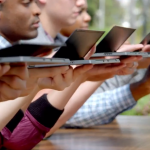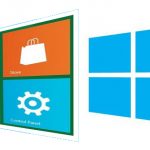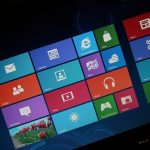Microsoft should either piss or get off the pot

Late last month, I wrote about how NUI (natural user interface) technology is Microsoft’s Trojan horse to draw consumers to the company's latest and upcoming devices. I definitely see a key technology strategy, but is it enough?
Kinect got the attention of many consumers, who were not considering the Xbox, and it sold a ton more consoles. But did Kinect keep consumers interested? How many people actually continue to regularly use the controller? In the same way, if Microsoft integrates deep natural language voice-controlled interfaces and camera-based gesture inputs into its next round of products and services, the company could easily get consumer attention and sell more phones and Surface tablets. That's not enough. What must Microsoft do to ensure these consumers remain interested in their new devices and services?
NUI can save Microsoft

I don’t know about you but as a lover of technology and the world around it, I find these times to be quite compelling. Apple, Google, Amazon and Microsoft (the big four) are setting the stage for an epic battle for tech dominance. The many articles and blog posts calling Microsoft dead in the water are way too premature. We are way too early in this new world of mobile computing to call Microsoft out of this game.
However, I will say this: If any of the four previously mentioned companies are in the most danger of failing at the consumer market, it’s Microsoft. The company better figure out how to get things together and quickly as time is not on the leadership's side and their competition is hitting on all cylinders.
Touchscreens on laptops make complete sense

With the advent of advances in technology and the increasing power of process, we are witnessing a tremendous transition in the design of user experiences and interface design in software development. Of particular interest in this article is the culmination of natural user interface design as it relates to the current crop of touchscreen laptops made possible by Windows 8.
One of the things I have noticed as more and more tech sites review touchscreen laptops is the increasing amount of comments such as, "I would never touch a screen on a laptop" or "why would anyone ever need to touch a screen on a laptop?" The problem with the comments, the thinking is limited by mouse and keyboard. Windows 8 is the first operating system to force us to move beyond this thinking when it comes to using traditional computing devices like desktops and laptops.
Microsoft, ditch OEM knuckleheads and make more hardware like Surface

Dell earnings announcement set off some concerns that the PC industry may not recover and as a result some are predicting Windows 8 sales may not be quite satisfying to Microsoft. Could the software giant have seen this coming a mile away?
A mobile future means that traditional PC hardware like laptops and ultrabooks will yield sales to a new generation of PC form factors like hybrids and tablets that are highly mobile, yet just as capable as laptops and ultrabooks, tablets like the Surface. Microsoft knew mobile was the future and prepped for it, here’s why.
Xbox Music is an epic failure

I had great hopes for Xbox Music when announced in October. It’s essentially the best of Spotify, iTunes, Amazon, and Google music services all wrapped up into one. But the sheer number of problems with this initial offering leaves myself and others in complete disappointment.
Xbox Music replaces Zune on Windows 8, Windows Phone 8, and the Xbox 360. The service includes the ability to purchase music a la carte, stream or download songs (via Xbox Music Pass subscription for $9.99 per month), sync playlists across devices, access a music locker, and more. Any tunes you purchase from the Xbox Music store, or playlists you create, sync across devices. Well, that's the idea, except, it’s not working for some people.
Microsoft Surface review for real people

I’ve spent the past couple of weeks reading review after review of Microsoft Surface. I feel like 90-percent of them were not written for me. You see, I’m your average user. I’m the average Joe user with a strong interest in the field of technology. I don’t care about pixel densities, or all the other niggles on performance tech geeks fight about all the time.
What matters to me: Does a particular device allow me to not only consume content but create it as well. And Surface accomplishes those two goals tremendously well. I write this review on a Surface RT using Microsoft Word in Office 2013.
Desktop on Windows RT makes sense

Friday, October 26, Microsoft released its highly anticipated Surface RT tablets to the masses. I was able to snag one of these devices and spent most of my weekend in the web browser reading reviews that questioned Microsoft’s so-called "curious inclusion" of the desktop. Perhaps I’m missing something but I don’t understand why there is so much angst about the desktop in RT. Some people don’t understand why the desktop is there but I think it makes complete sense.
To be fair, I really do understand that to other reviewers of RT the desktop is only limited to MS Office applications and few other MS included apps like Notepad. Additionally, RT does not allow x86 apps to run or even be installed. That being said, I get the feeling this limitation due to the platform running on the ARM architecture is temporary.
Home Shopping Network previews new Windows 8 apps

This weekend I got a curious text message from my mother: "I’m watching a presentation of Windows 8 on HSN".
I quickly tuned into the Home Shopping Network channel and to my surprise they were actually doing a pretty decent job of explaining Windows 8 (and offering PCs for preorder). They demoed various benefits of the new OS from the apps to the fact that if users are confused by the new interface, the old legacy desktop is a button press away (the windows key).
Why would Microsoft limit the Windows Phone 8 Preview Program SDK?

Microsoft's plan to only let a few key developers into the Windows Phone 8 Preview Program SDK, understandably upsets many developers. For a plaform with only about 3 percent market share, Microsoft needs all the supporters it can get, or so the presumption goes.
Why lock out most of the people needed to develop apps that take advantage of your new platform? I think there could be two possible answers: (1) a new marketplace strategy based on the quality of apps, and (2) major unannounced features.
Windows 8 is a graphic shift in computing habits

Last in a series. If you read tech blogs as much as I do I am sure you have seen a number of articles criticizing Windows 8. Among these are articles that focus on the overall design of the Modern UI and its numerous inconsistencies. I saw a forum post on one website claiming that visual designers hate Windows 8?
The reason, hold on to your seat because this one is a doozy: the Modern UI design language has done away with drop shadows and realistic looking icons; in other words, the interface looks nothing like the skeuomorphic interfaces of Apple and to some degree, Google.
Windows 8 simplifies computing

Second in a series. Most, if not all, the reviews of Windows 8 focus on the intuitiveness of the user interface. As a designer/developer I think lots about creating good UI and user experience (UX). What's seems important to product reviewers or techies is meaningless to Microsoft's target audience of Windows 8 users.
I’m here to tell you that there’s more to the analysis than intuitiveness. UI designers who are really serious about designing compelling user interfaces know that intuitiveness is not the only aspect to consider, there’s also learnability and discoverability that are essential to UI design and development.
Windows 8 is a compelling story

First in a series. Over the past few months I’ve seen several articles and forum postings negatively criticizing the design of Windows 8; from the flatness of the UI to design inconsistencies on the desktop. I’ve also seen articles asserting how difficult the operating system is to use because it’s not instantly intuitive.
While I think there are some valid concerns in these articles about Windows 8, I personally believe that most of what has been written is shortsighted. I hope to prove this over three articles.
Why isn't Windows Phone more successful?

As Nokia reports its earnings, I can’t help but feel bad for the company's efforts here in the United States. To me, 600,000 units in North America (and supposedly that includes other devices besides Lumia 900) is not exactly what I would call a win.
But that’s just me. I’m a Windows Phone user. It’s a fantastic platform. The interface is gorgeous, and the OS is fast. I haven’t had issues with Windows Phone that I have had with Android. So in my opinion, the platform deserves a spot at the table with Android and iOS. So why hasn’t it been very successful?
Nokia could teach Apple a thing or two about customer service

It’s the biggest product launch of the year so far for Windows Phone and Nokia. The Lumia 900 went on sale April 8th and early reports suggest that sales are better than expected. They're nothing stellar but nevertheless some good news for a platform struggling to gain market share.
Earlier this week, I convinced my mother to purchase her first Windows Phone, the Cyan Lumia 900. Later that afternoon, I learned of a serious software bug causing devices to literally lose their data connections --an essential feature for any smartphone. So admittedly, I was pretty concerned. It turns out, I didn’t need to be.
Windows 8 'Metro' is revolutionary

February 29 is the day I waited for for a long time. I downloaded the Windows 8 Consumer Preview to test out the work Microsoft has done so far, and I am very impressed. There are still some rough edges, though, but I like what Microsoft is doing. Strangely, I seem to be one of the few people that actually "get it".
As a designer, I am perfectly on board with anything that allows print and digital to come together in interesting ways. Mike Kruzeniski, who is a Creative Director at Microsoft, gave presentation "How Print Design is the Future of Interaction" at SXSW 2011 discussing this convergence. In interactive, content is important. We are quickly moving to a time where the lines between print and interactive content are blurring. And herein lies the problem with Windows 8. I refer to Metro, Windows 8's new motif that is receiving mixed reaction from testers.
Robert's Bio
Robert Johnson is a user interface developer specializing in the user experience (UX) of .NET-based web applications. He has been working in some form of web development and graphic design for 14 years. He loves technology in general, particularly that of Apple, Google and Microsoft.
© 1998-2024 BetaNews, Inc. All Rights Reserved. Privacy Policy - Cookie Policy.
